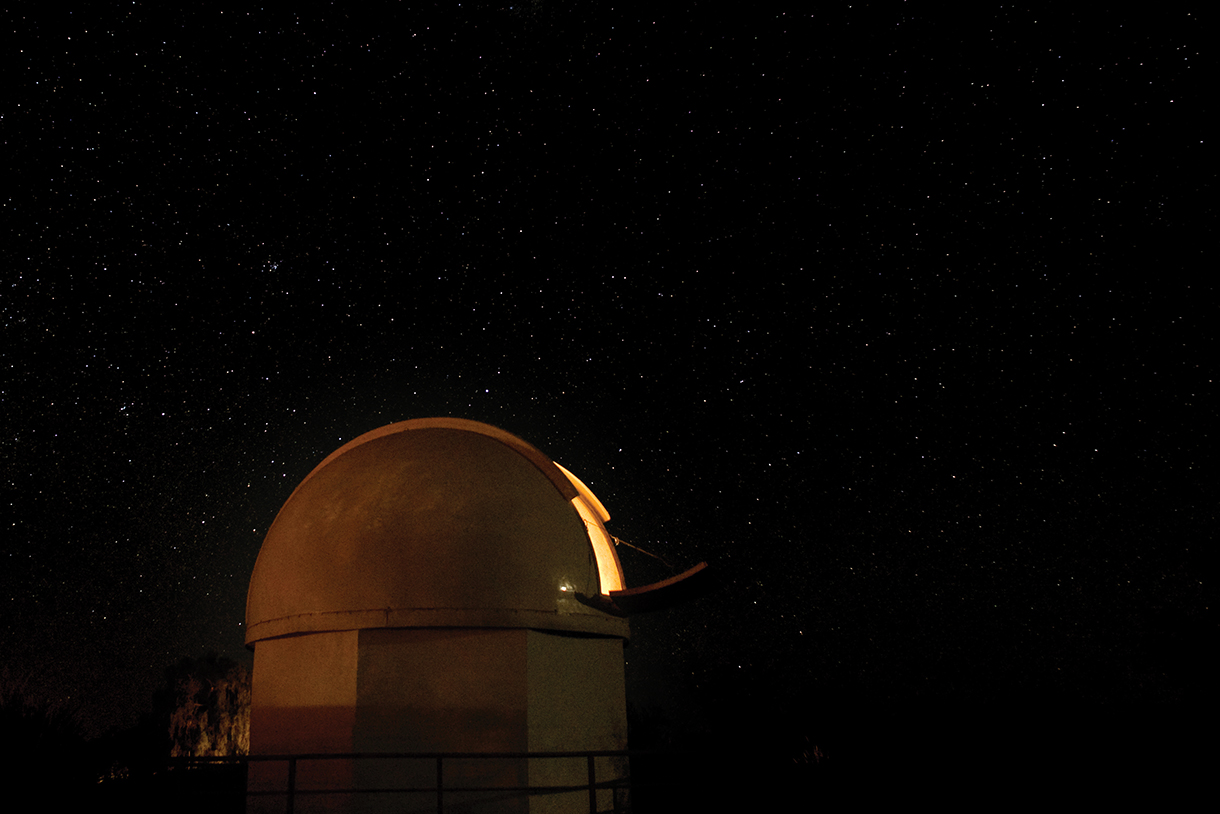
Stargazing at Top Luxury Resorts with Best-in-class Observatories Across the World
To really appreciate the majesty and wonder of the cosmos, there is no better way to see the sky than the way professional astronomers do: through a research-grade telescope in a rotating domed observatory. There are many of these around the world, but almost all are closed to the general public and solely for academics and scientists. Those that do allow access typically accept large groups and offer no lodging.
The investment in an observatory is much bigger than just going out and buying a nice telescope to set up on the beach the way many hotels do, and there are only a tiny handful of top resorts around the world that have made this investment. The good news is that when they do, they are in places with exceptional stargazing, like tropical islands or Chile’s Atacama Desert, the No. 1 spot on Earth for researchers, and home to the world’s largest observatory, the Atacama Large Millimeter Array (ALMA). They also tend to offer extras you won’t find at a museum, such as private astronomy dinners and fine Champagne.
Seeing the night sky up close and personal through these best-in-class telescopes, with guidance from a trained astronomer, can be the highlight of a vacation and is a much different leisure activity than the typical offering; great for couples, families, anyone full of curiosity, or frequent travelers craving something new. All of the following resorts are top-shelf destinations to begin with, and offer much more than the domes, so you can enjoy the best of many worlds.
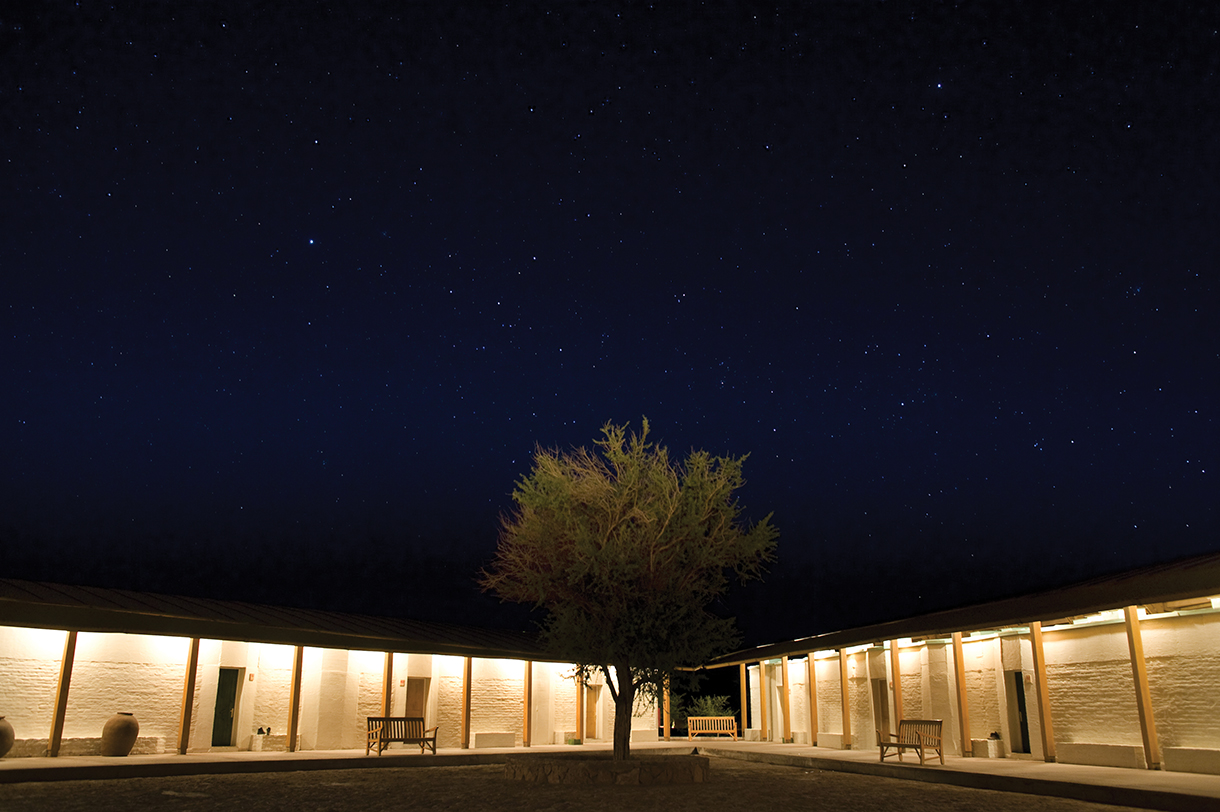
Explora Atacama Lodge, Chile
The driest place on Earth, the Atacama Desert is where NASA has tested its Mars rovers, because it feels like the surface of another planet. But the altitude, remoteness, and absence of water vapor in the air also make it tops for looking upward, and several of the world’s most advanced research facilities are here, including the biggest of them all, ALMA. Explora is a high-end outdoor activity and nature-driven South American company that operates upscale, all-inclusive adventure lodges in locations such as Patagonia and Easter Island, but only its Atacama oasis has a domed observatory. Opened in 2008, the facility is considered the best private observatory in Chile and houses a 16-inch, advanced Meade LX220R research telescope. Coupled with more than 15 years of experience, access to local scientists, and the ideal setting, star finding makes for a dramatic nighttime activity; for visitors from the United States, the southern hemisphere showcases constellations and objects that cannot be viewed at home. The program begins outside with an explanation of the cosmos and the naked eye, then continues into the dome, and because overcast skies are unheard of here, it is offered almost every night. Stargazing is just one of the dozens of included daily activities at the lodge, which also features hiking, biking, horseback riding, flamingo watching, and geothermal geyser tours. explora.com
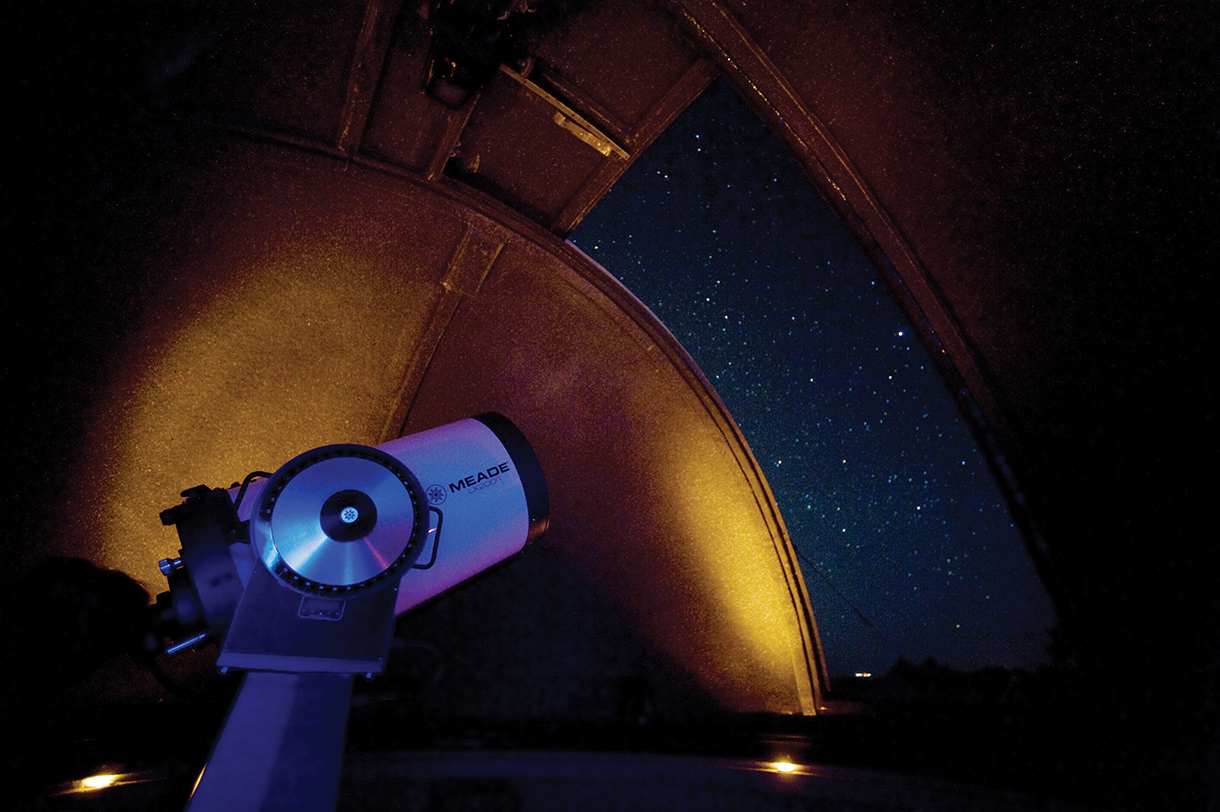
ALMA Radio Telescope
As a bonus for visitors to the Atacama, public guided tours of the huge Atacama Large Millimeter Array (ALMA) radio telescope array can be arranged (pending pandemic-related safety closures). A joint project of East Asia, North America, Chile, and member states of the European Southern Observatory, ALMA took 11 years to build and has been fully operational since 2013. Unlike optical viewing, radio telescopes use giant antennas, and ALMA combines 66 of these (each spanning from 23 to 40 feet and collectively weighing over 100 tons) into one telescope array so powerful it can see individual organic molecules in space. The complex is a city unto itself, complete with staff housing and a fire department, and public tours last 90 minutes, including images of ALMA discoveries and the massive 28-wheel transporters that reposition the antennas. almaobservatory.org
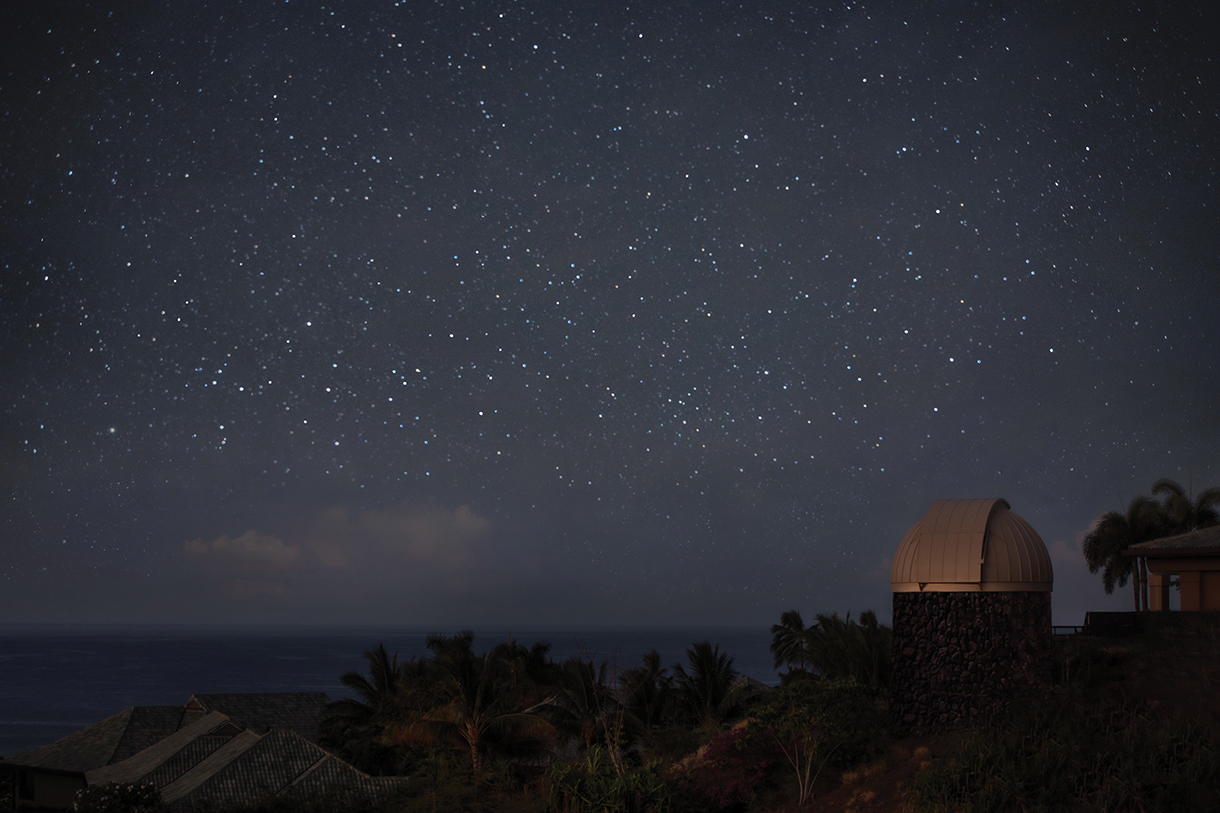
Four Seasons Resort Lanai, Hawaii
In Hawaii, a top location for scientists and serious astronomical research, the newest entrant in the rarefied astronomy travel category is this renowned beach resort owned by centibillionaire Larry Ellison, a big fan of science who doesn’t skimp on upgrades. During the pandemic, the resort launched the Lanai Observatory, featuring a state-of-the-art, 1-meter PlaneWave observatory-class telescope, which runs north of a half-million dollars. Beyond the two-story domed structure it resides in, the biggest differentiator in telescope quality is width, or aperture. A very good recreational telescope for amateur astronomers measures 100 mm, a mere one-tenth of the diameter of this giant.
The result is an extensive, multifaceted astrotourism experience for resort guests, Lanai residents, and Hawaiian students. Located near the resort’s conference center, the observatory can hold 10 people at once, for an intimate experience. The centerpiece of its programming is the Kilo Hōkū Experience, during which members of the resort’s Love Lanai team couple astronomy viewing with a cultural presentation on Lanai history and how the Peoples of the Pacific navigated their way to Hawaii using celestial elements. After the presentation, guests go hands-on and explore planets, star clusters, galaxies, nebulae, and the moon. There are also private viewing sessions and other options available, and future plans include a partnership with Imiloa Astronomy Center in Oahu, to create a visiting expert guest series. The facility is open to island residents and used to expose local students to STEM activities. fourseasons.com
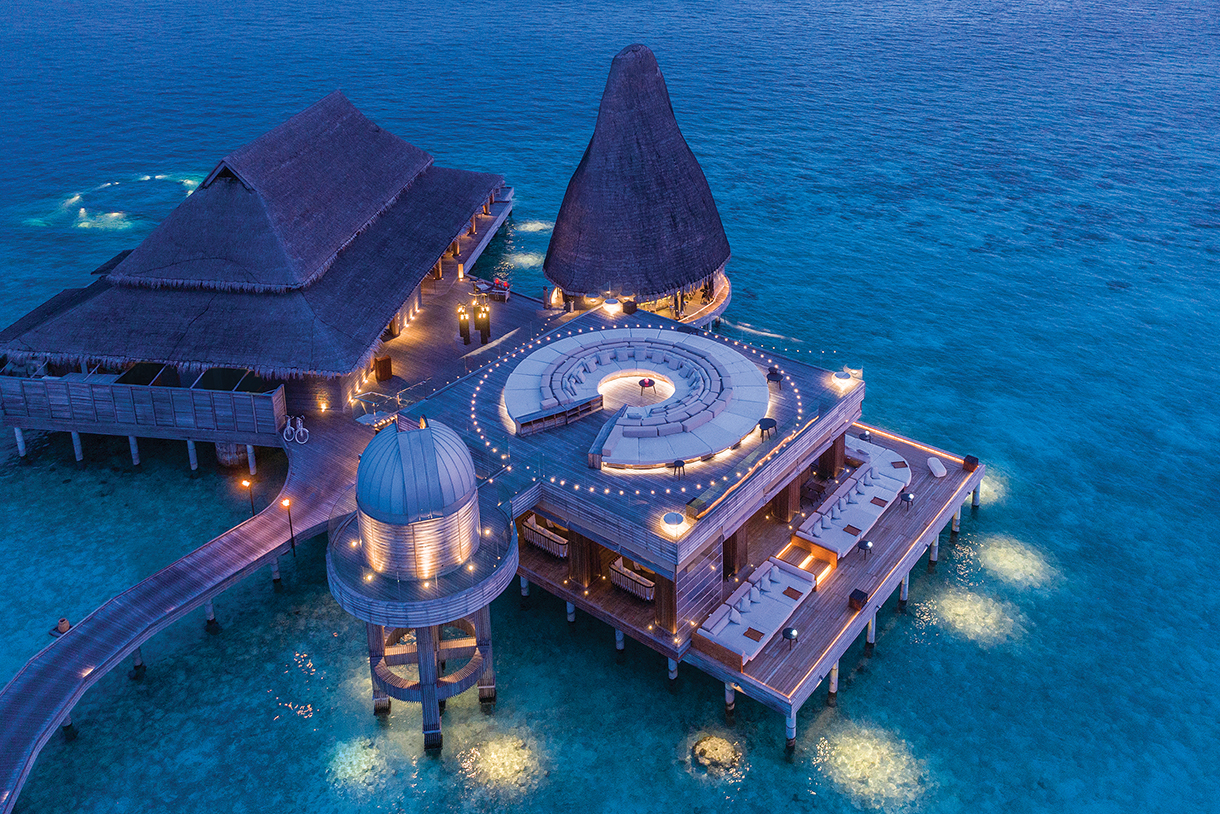
Anantara Kihavah Maldives Villas
SKY at Anantara Kihavah is the finest overwater observatory in the Maldives, located on the resort’s main central platform and connected to an open-air restaurant and circular rooftop bar. The site offers stargazing sessions three times weekly. They also have 4 a.m. sessions with breakfast, as well as private couple’s stargazing with a bottle of bubbly—from circular day beds—and honeymoon stargazing, which adds the chance to name a star after your loved one.
SKY claims to be the most powerful telescope in the Indian Ocean, the same 16-inch advanced Meade LX220R used at Chile’s Explora, housed in a custom revolving dome made of ash. Because the Maldives sit on the equator, guests have the rare opportunity to see constellations, galaxies, nebulae, and other phenomena in both hemispheres. anantara.com
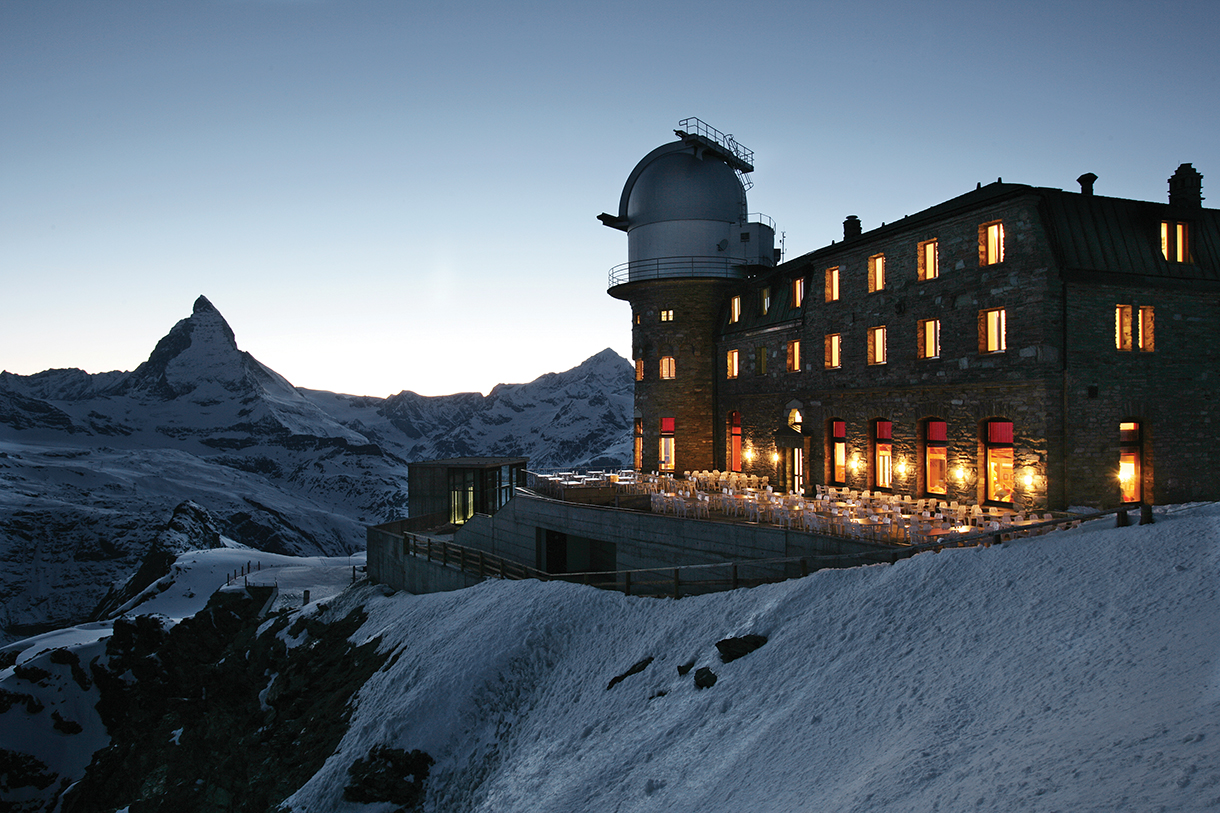
Kulmhotel Gornergrat, Zermatt, Switzerland
One of the most visited and beloved tourist destinations in Switzerland, Zermatt is the quintessential mountain town and riding the cog railway up to the Gornergrat, a summit with sweeping alpine views, is a must-do for nearly every visitor. A fraction of those travelers have another reason for ascending the scenic mountain rail line, and that is to stay at the highest hotel in Switzerland, built way up here at 10,170 feet in 1897. Because of the altitude, low light pollution, and air quality, the site proved popular with astronomy buffs, and in 1967 the hotel built twin domed towers at either end of the main building. Over the years these have contained a constantly upgraded series of optical, radio, and infrared telescopes.
In winter the Kulm is popular with skiers, and in summer hikers and mountaineers, but everyone loves viewing the sky at night. This is the heart of the Swiss Alps after all, and home to the iconic Matterhorn, the most recognizable mountain on Earth, so the hotel’s Dining With the Stars package includes a traditional fondue dinner accompanied by a lecture from the resident astronomer and eyes-on viewing in the observatory. The dinner program is offered only in winter months, and because the observatory is run for research, public viewing is limited at other times. However, hotel guests can arrange private viewing access in advance of their visit. Small groups are able to schedule visits as well, and there is a public-facing Stargazing week every October, for which the hotel brings in a world-renowned host astronomer. The Kulm dome currently houses a massive research-grade, 24-inch deep-sky telescope. gornergrat-kulm.ch
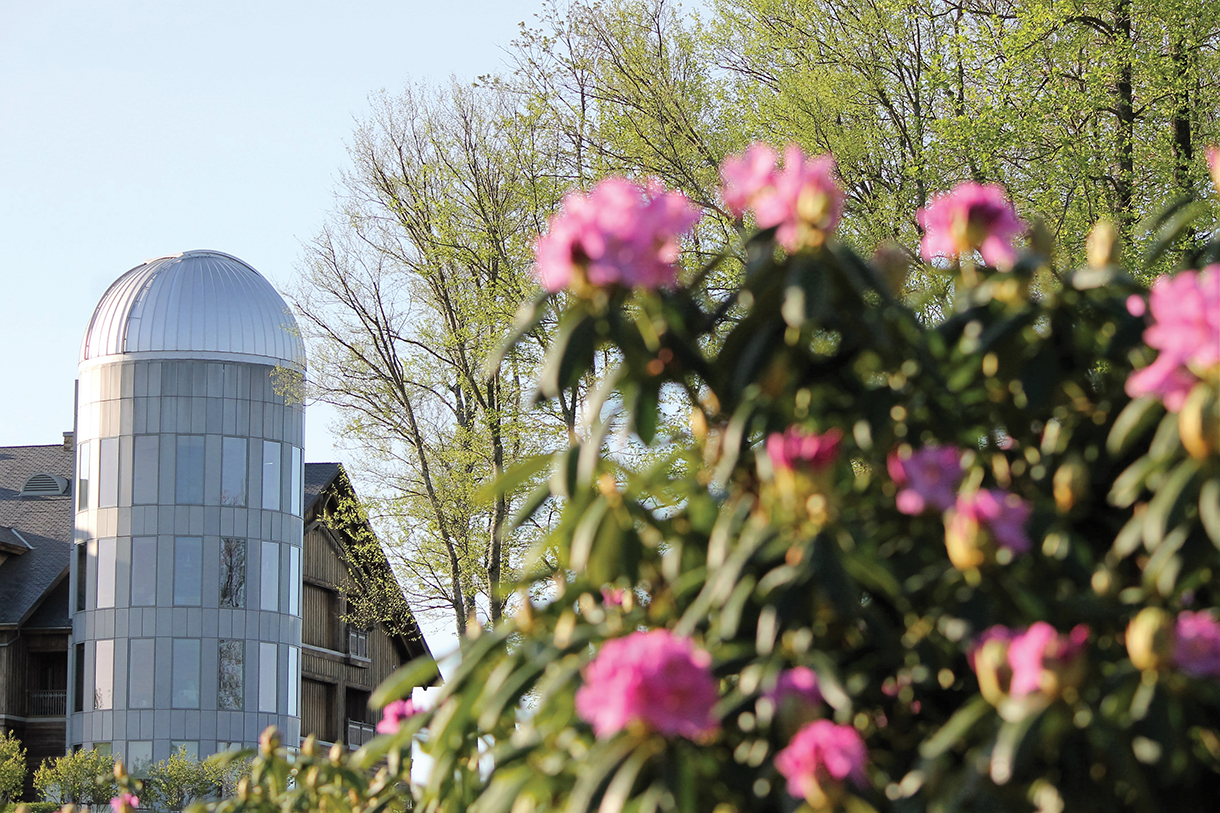
Auberge Primland Resort, Virginia
Because Primland is a private, 12,000-acre sporting estate in the rural Blue Ridge Mountains, it controls its own light pollution and has little development around it—making it one of the best spots in the continental United States and one of the only US resorts with its own dome. The three-story observatory is equipped with two telescopes, both from leading optics specialist Celestron: a top-of-the-line CGE Pro 1400 and a CPC 800. The equipment can capture images that are 50 million light- years away, and display them on large, high-definition monitors so the resident astronomer can explain the view. The Tour of the Universe guided viewing is offered twice nightly all year round. Programs begin outside with a Star Walk, followed by viewing in the dome. Just in case you need something to do during the day. Primland also has one of the best golf courses in Virginia, mountain biking, hiking, fly-fishing, a world-class clay shooting facility, an equestrian center, an off-road driving course, meditation, yoga, archery, tennis, watersports, and classes in cooking and art. aubergeresorts.com




